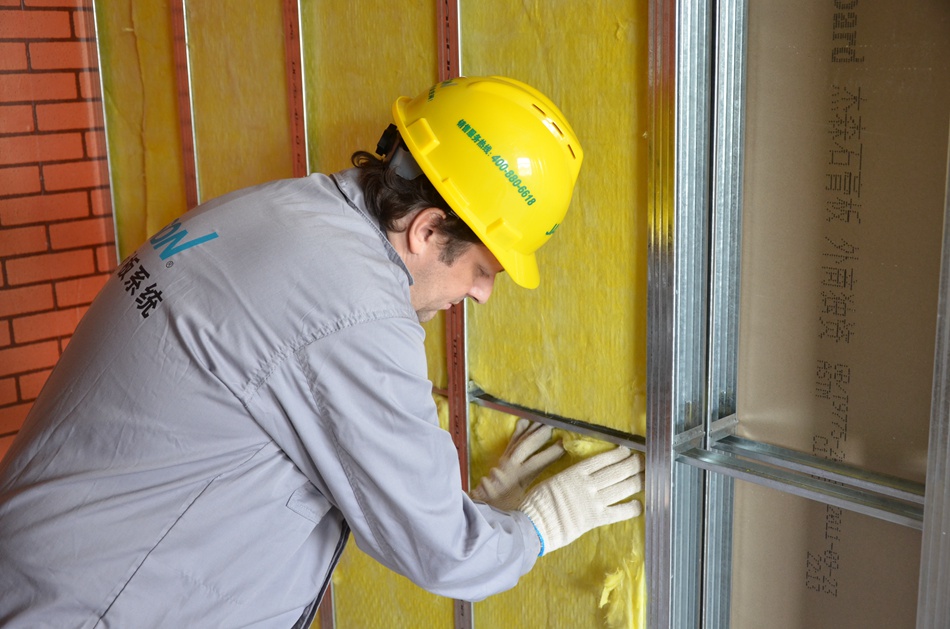- High End Gypsum Board System Solution Provider
It's too noisy upstairs, want to install a seismic artifact? Let's first read this article on using gypsum board ceiling to solve problems
Nowadays, most urban residents live in buildings, and only a few live in villas. Although alleyways, alleys, and courtyards have long disappeared, the neighborhood relationship in the building is also an unavoidable topic. One of the most frustrating aspects is the noise problem from neighbors upstairs, especially for those who enjoy quietness, which can be a form of torture. What kind of noise will affect physical health? If we cannot negotiate with our neighbors, how can we reduce the impact of noise from our own perspective? In this article, Jason's gypsum board editor is here to offer advice and suggestions for everyone.

In the field of civil construction, the national standard for noise is: daytime noise cannot exceed 40 decibels, and nighttime noise cannot exceed 30 decibels. If this standard is exceeded, opinions can be provided. But whether neighbors accept your opinions or humbly accept repeated education without improvement is not something you can control. Encountering an unreasonable neighbor, the more you raise your opinions, the more they become lively. It's as if they have the heart to put on a seismic artifact and die together. But now that the housing prices are so high, it is difficult to buy a house that is satisfactory in all aspects and has not been lived for a few days. The cost of selling and replacing it is definitely too high and cannot be borne. How can we solve the problem from our own perspective when we cannot solve it ourselves, and the property and neighborhood committees cannot cure the unreasonable upstairs neighbors?

As the saying goes, "Take a step back from the vast sea and sky, and endure the calm waves for a while." Encountering bad neighbors is also an inevitable thing, and sometimes it is better to find a solution from oneself that is efficient and direct than conflicting with others. The noise that usually affects daily life the most is generated in the bedroom after it is quiet at night. For example, there are children running back and forth upstairs, elderly people often wake up in the middle of the night, and even occasionally throw things on the ground. If they fall asleep and are awakened by sudden sounds, their waking up anger may make them sick and affect the quality of sleep. They may not be energetic even when working during the day. In this case, starting from the interior of one's own house, the most effective sound insulation system is the high-strength gypsum board sound insulation system.

As shown in the above figure, a simple analysis is to use a U-shaped metal veneer ceiling, covered with sound insulation cotton, and then double layered gypsum board with sound insulation felt to block the noise transmitted from the floor through the thinnest gypsum board ceiling system. When the construction is in place, it can effectively shield at least 20-30 decibels of noise. If the noise situation upstairs is not serious, then the problem is basically solved. And due to the use of "veneer ceiling", even with the double-layer gypsum board process, the total thickness will not exceed 6CM or even less, which has little impact on the overall floor height and will not cause environmental suppression. The cost is also completely acceptable, making it one of the most friendly solutions.

But if the noise situation is still relatively serious, just doing veneer ceiling is not enough. It is recommended to purchase a household decibel meter and measure the noise level at home before deciding how much cost to invest to solve this problem. For example, if the noise level is greater than 58 decibels during the day and 48 decibels at night (which exceeds 30% of the national noise standard bottom line), it is necessary to spend more money on more complex solutions to reduce noise, improve living standards, and improve sleep quality.

This requires a comprehensive, multi angle, and multi-dimensional noise reduction process to achieve, mainly divided into the following aspects.
1. Sound insulation ceiling is still essential;
2. Even spring suspension rods with damping and shock-absorbing glue, which can only be obtained by installing KTV on the basis of soundproof ceilings;
3. All walls also need to be equipped with U-shaped metal veneer partition systems and sound insulation cotton;
4. The door of the room must also choose a solid wood set door, the thicker the better;
5. In addition to using broken bridge aluminum profiles, double-layer vacuum glass is also necessary for the windows of the room;
6. Make sound-absorbing soft packaging materials as much as possible at the head of the bed and other locations;
7. Thickened fabric curtains can also reduce noise appropriately.

Basically, achieving the above points can completely shield noise of 50 decibels or even more. If the thickness of the ceiling and veneer wall is not considered, the patented QW soundproof keel developed independently by Jason gypsum board can also be used for soundproof wall system applications, combined with high-strength gypsum board or high-performance gypsum based fiber board to enhance the soundproofing effect. A set of combo punches, allowing you to no longer be disturbed by noise and give yourself a sense of tranquility.
(Some of the images are from the internet. If there is a possibility of infringement, please contact the editor to delete them.)
